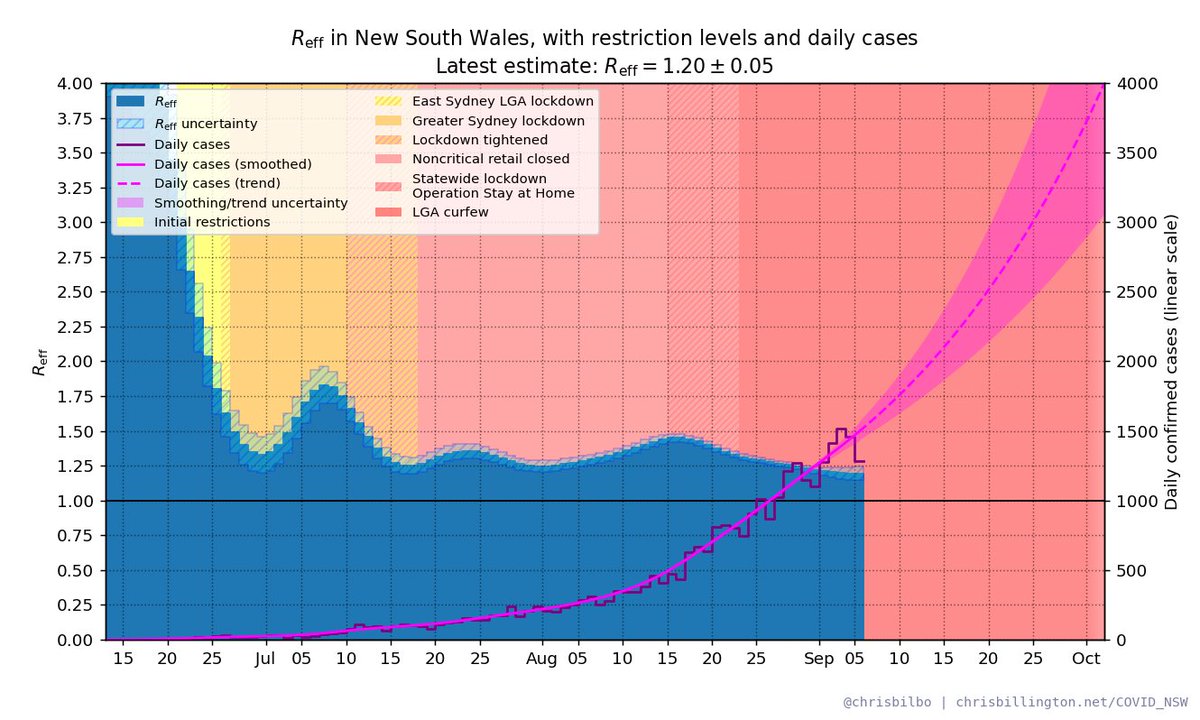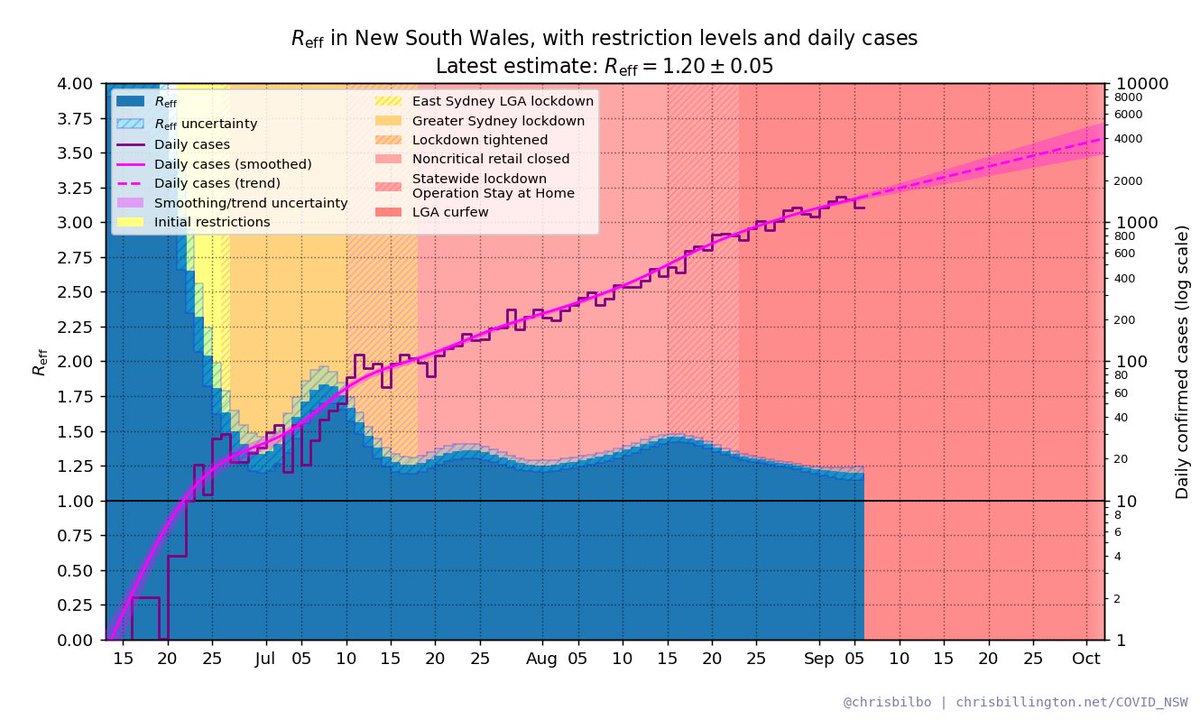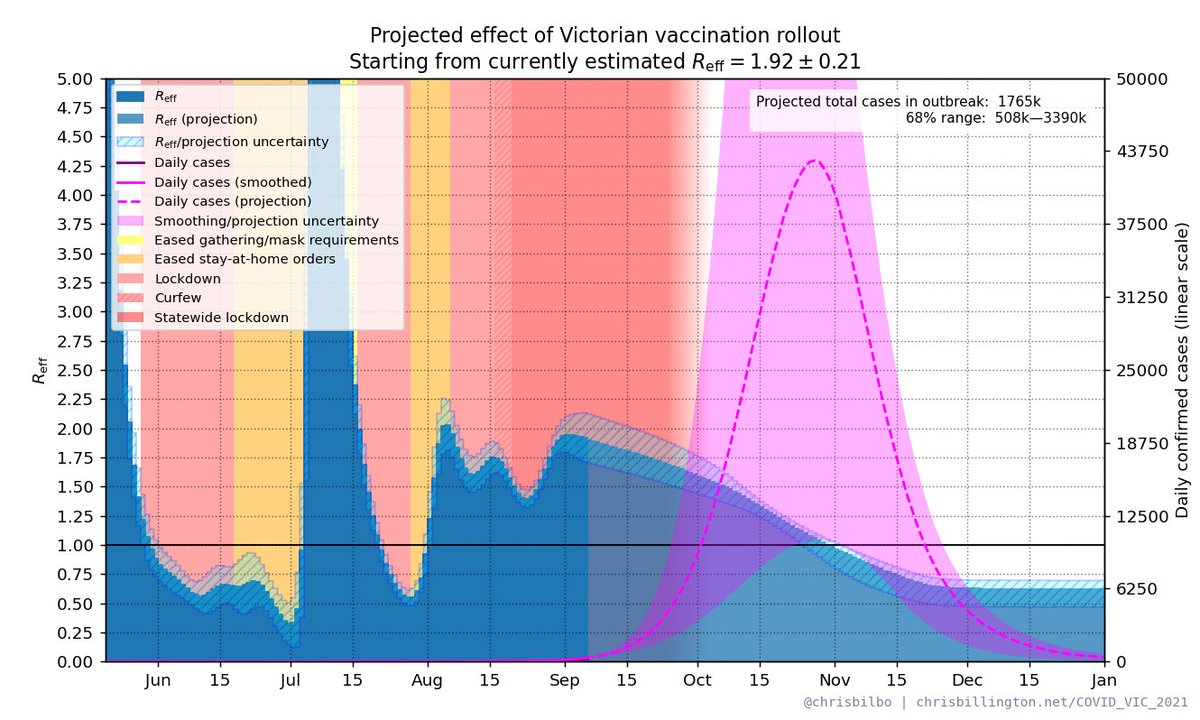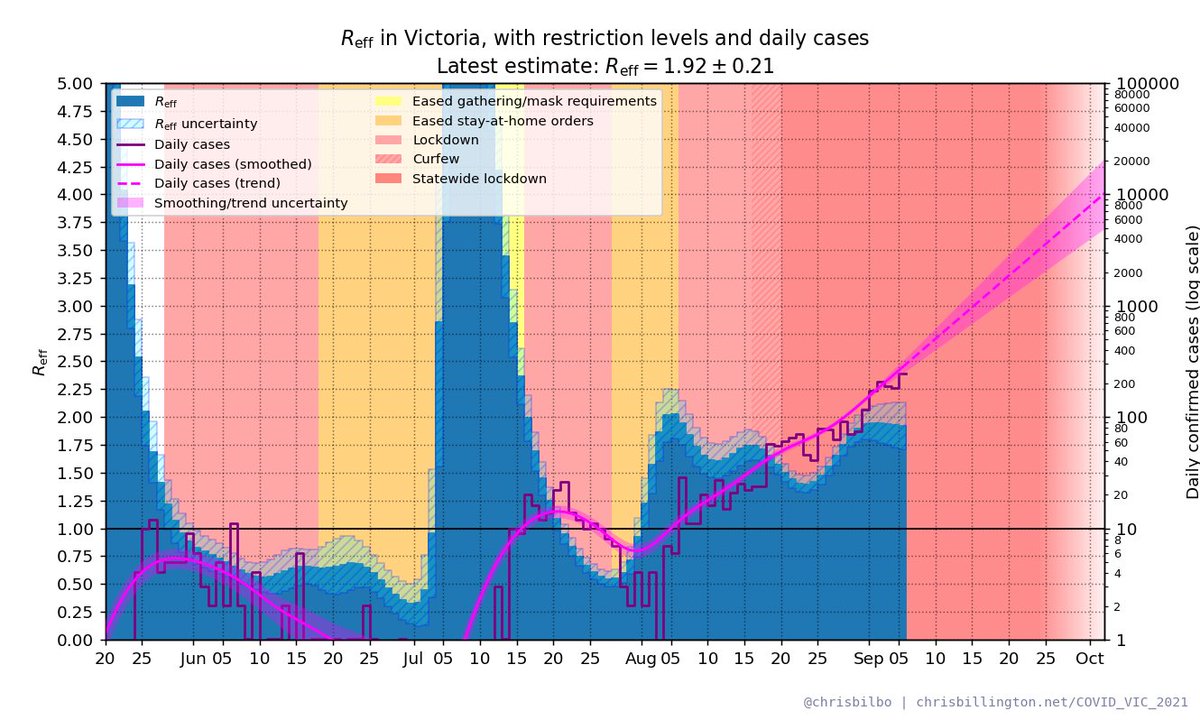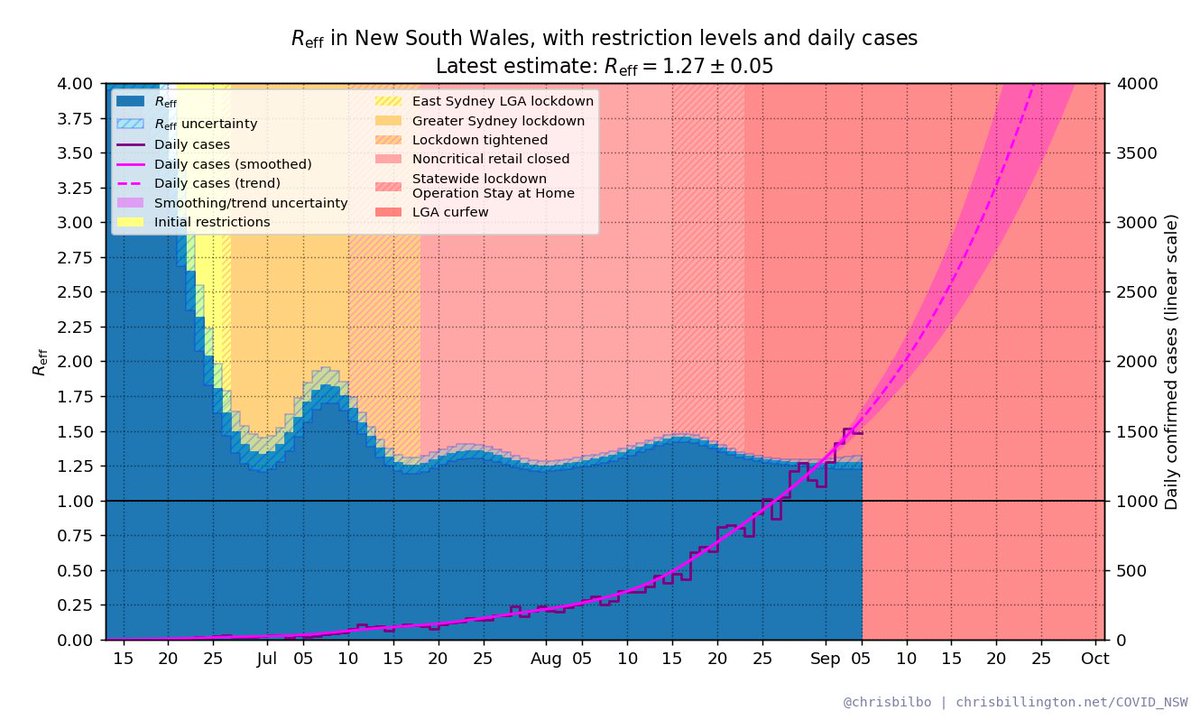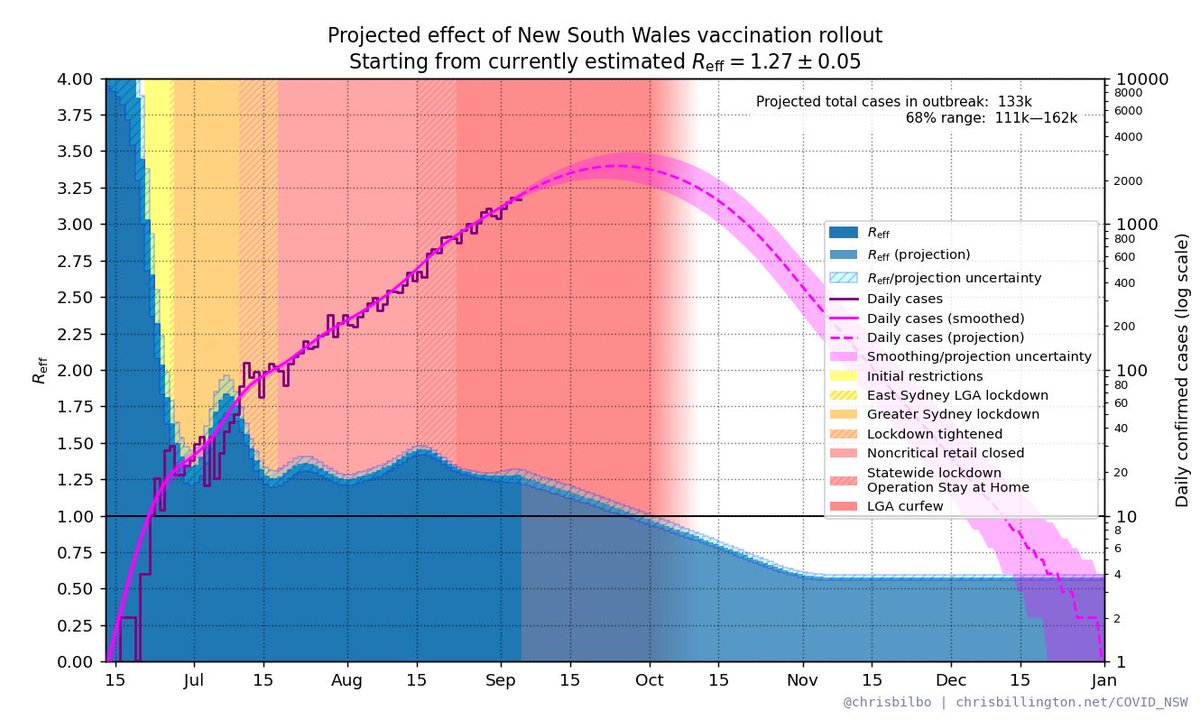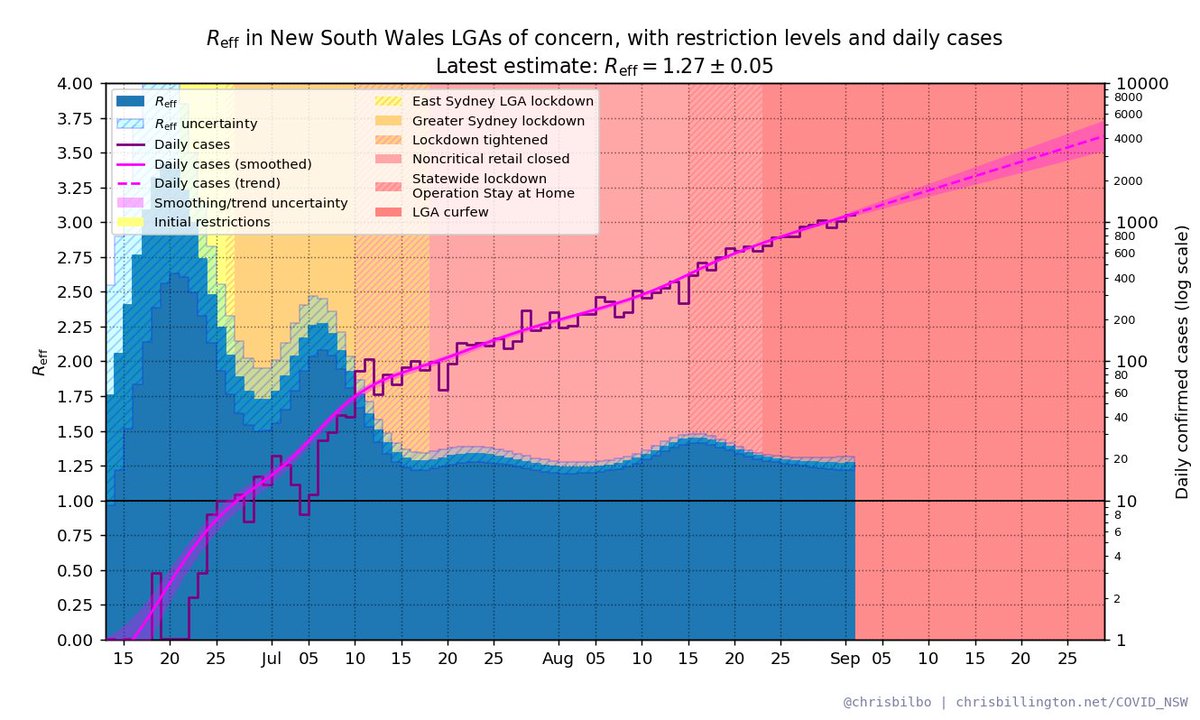
NSW R_eff as of September 4th with daily cases and restrictions. Latest estimate: R_eff = 1.29 ± 0.05
Plus projected effect of vaccination rollout.
Cases shown on a linear scale (log scale in next tweet).
More info chrisbillington.net/COVID_NSW.html
#covid19nsw #covidsydney

Plus projected effect of vaccination rollout.
Cases shown on a linear scale (log scale in next tweet).
More info chrisbillington.net/COVID_NSW.html
#covid19nsw #covidsydney
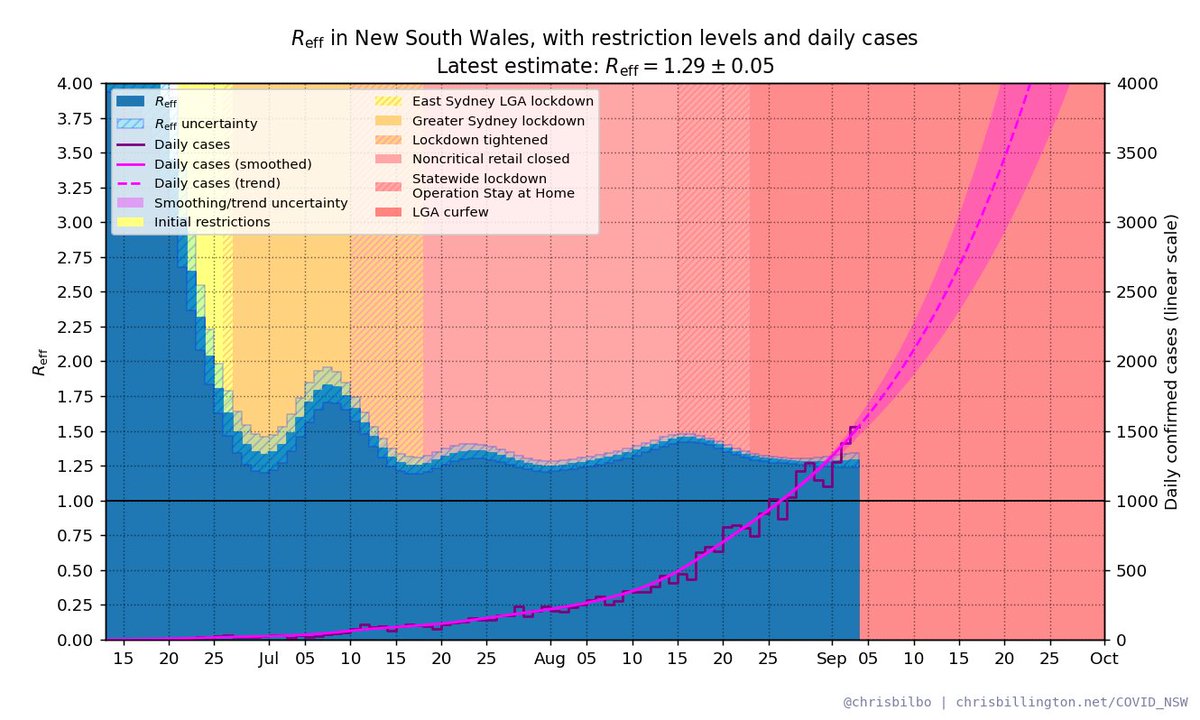

NSW R_eff as of September 4th with daily cases and restrictions. Latest estimate: R_eff = 1.29 ± 0.05
Plus projected effect of vaccination rollout.
(Cases shown on a log scale)
More info chrisbillington.net/COVID_NSW.html
#covid19nsw #covidsydney

Plus projected effect of vaccination rollout.
(Cases shown on a log scale)
More info chrisbillington.net/COVID_NSW.html
#covid19nsw #covidsydney
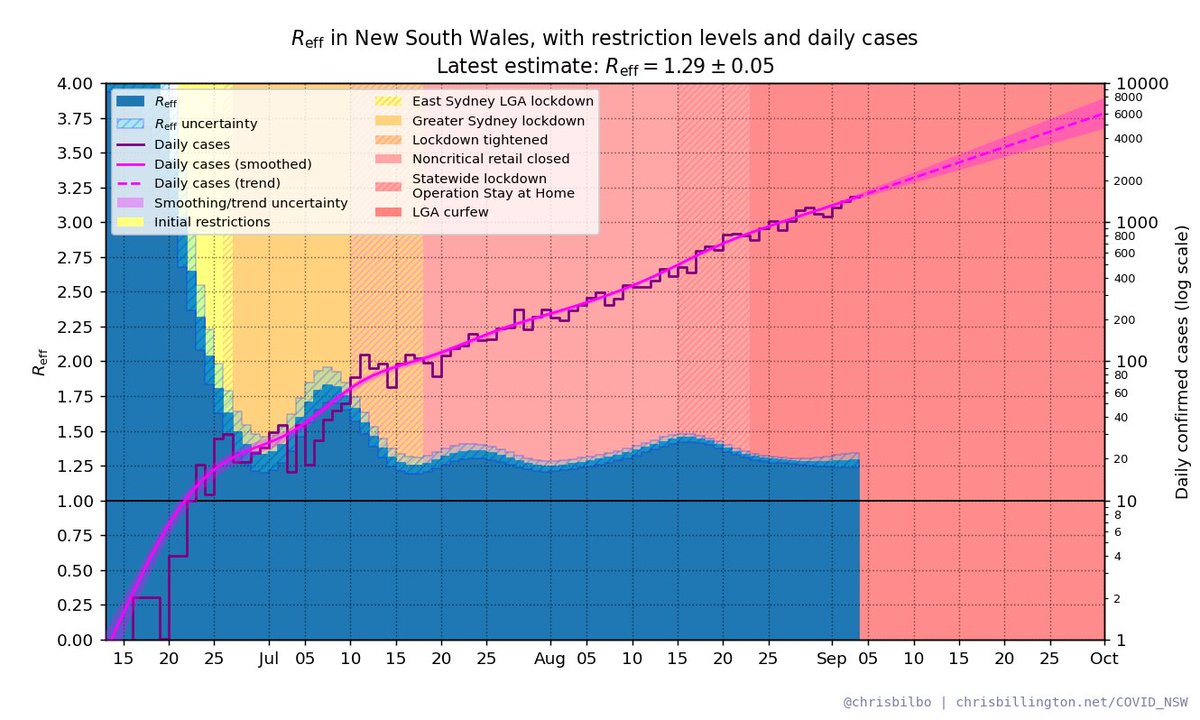

R_eff in LGAs of concern* vs the rest of NSW (*all of Penrith included):
LGAs of concern: R_eff = 1.27 ± 0.05
Rest of NSW: R_eff = 1.27 ± 0.07
(Cases shown on a log scale)
(note LGA data is several days old, does not include today's cases)
#covid19nsw #covidsydney

LGAs of concern: R_eff = 1.27 ± 0.05
Rest of NSW: R_eff = 1.27 ± 0.07
(Cases shown on a log scale)
(note LGA data is several days old, does not include today's cases)
#covid19nsw #covidsydney
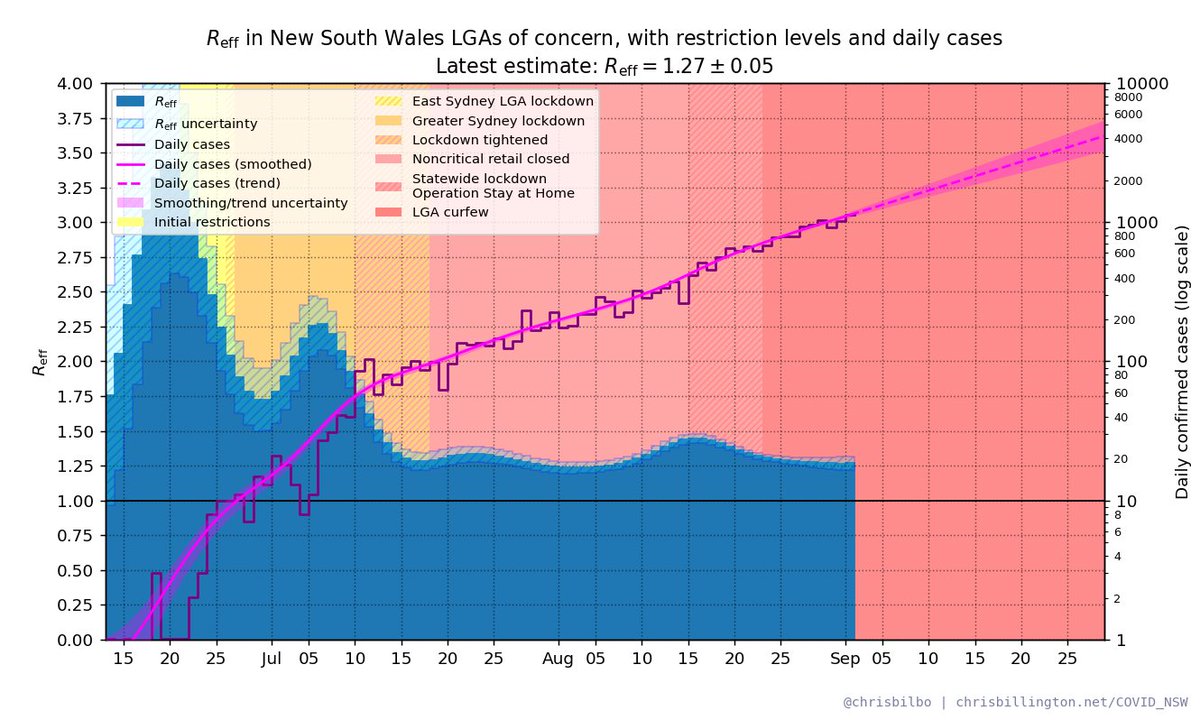

Expected numbers if the current trend continues:
day cases 68% range
Sun: 1570 1398—1744
Mon: 1643 1440—1854
Tue: 1716 1477—1964
Wed: 1787 1515—2082
Thu: 1861 1546—2201
Fri: 1932 1568—2323
Sat: 1998 1601—2438
Doubling time is 13.6 days.
day cases 68% range
Sun: 1570 1398—1744
Mon: 1643 1440—1854
Tue: 1716 1477—1964
Wed: 1787 1515—2082
Thu: 1861 1546—2201
Fri: 1932 1568—2323
Sat: 1998 1601—2438
Doubling time is 13.6 days.
• • •
Missing some Tweet in this thread? You can try to
force a refresh



